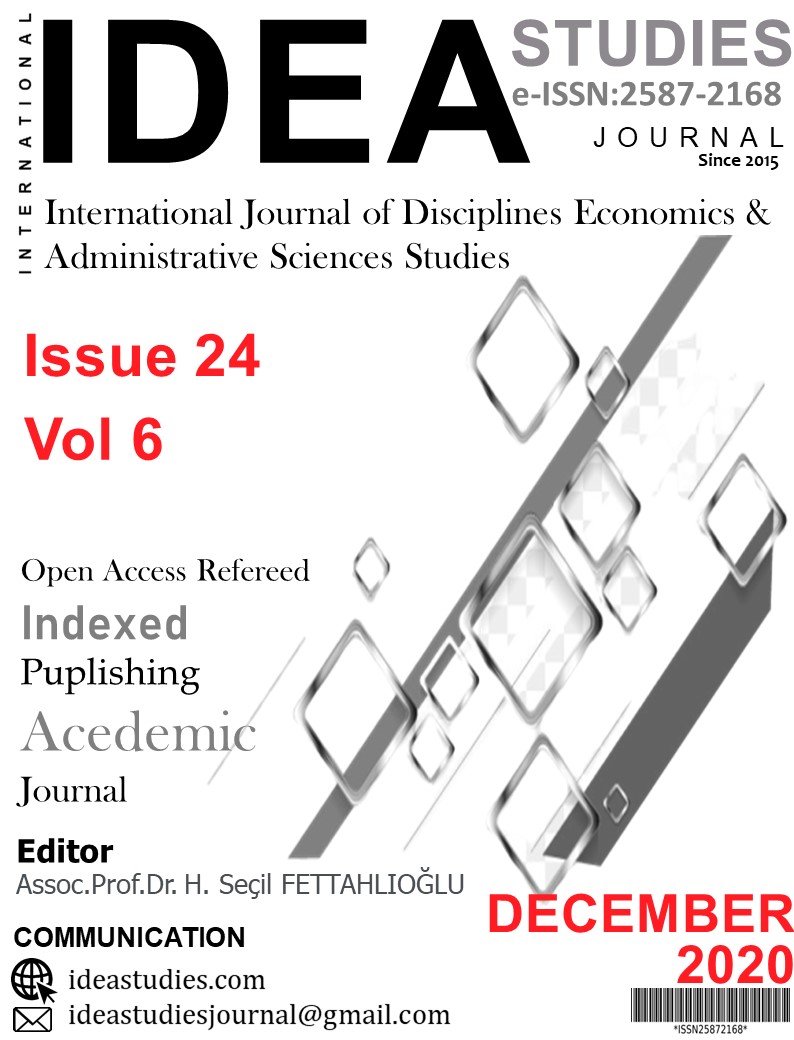SOUTH KOREA'S COMPETITIVENESS ON THE BASIS OF FACTOR DENSITY AND TECHNOLOGY EQUIPMENT IN TERMS OF CONTRIBUTION TO TRADE BALANCE
Author :
Abstract
Çalışmada Güney Kore’nin dış ticaretine katkı perspektifinde ihracat rekabet gücünün öneminin ortaya koyulması amaçlanmıştır. Bu bağlamda, Standart Uluslararası Ticaret Sınıflandırması ve Uluslararası Standart Sanayi Sınıflandırması kullanılmıştır. Bununla beraber, sözü edilen sınıflandırmalara ait ürün gruplarının ihracat rekabet güçlerinin hesaplanabilmesi için Ticaret Dengesine Katkı Endeksi kullanılmıştır. Elde edilen sonuçlara göre, son yıllarda Güney Kore katma değeri ve teknoloji düzeyi yüksek ürün gruplarının ihracatındaki rekabet gücünü arttırmaktadır.
Keywords
Abstract
We aim to demonstrate the importance of export competitiveness in terms of contribution to South Korea's foreign trade in this study. In this context, we use Standard International Trade Classification and International Standard Industry Classification. However, we use the Contribution to Trade Balance index to calculate the export competitiveness of product groups belonging to the aforementioned classifications. According to the results obtained, South Korea has been increasing its competitiveness in exports of products with high added value and technology levels in recent years.
Keywords
- Arslanhan, S., & Kurtsal, Y. (2010). Güney Kore inovasyondaki başarısını nelere borçlu? Türkiye
- Arslanhan, S., & Kurtsal, Y. (2010). Güney Kore inovasyondaki başarısını nelere borçlu? Türkiye İçin Çıkarımlar. Ankara: Türkiye Ekonomi Politikaları Araştırma Vakfı.
- Çivi, E. (2001). Rekabet Gücü: Literatür Araştırması. Yönetim ve Ekonomi, 8(2), 22-38.
- Çivi, E., Erol, İ., İnanlı, T., & Erol, E. (2008). Uluslararası Rekabet Gücüne Farklı Bakışlar. Ekonomik ve Sosyal Araştırmalar Dergisi, 4(1), 2-22.
- Erkan, B., & Aybudak, H. G. (2019). Comparative Specialization and Competition AnalysisAccording to the Technology Hardware of Turkey and South Korea. 8th SCF InternationalConference on “The Economic and Social Impacts of the Globalization and Liberalization”. Antalya.
- Erkan, B., & Bozduman, E. T. (2019). Türkiye'nin Emek Yoğun İmalat Mallarının Rekabet Analizi. Sosyal Politikalar ve Bilimsel Araştırmalar Kongresi. Ankara: İKSAD.
- Europe, E. C. (2002). Economic Survey of Europe. Geneva: United Nations Publication.
- Fagerberg, J. (1988). International Competitiveness. The Economic Journal, 98(391), 355-374.
- Fontagné, L., & Freudenberg, M. (2002). Long-term Trends in Intra-Industry Trade. Frontiers of Research in Intra-Industry Trade, 131-158.
- Galović, T. (2015). The International Competitiveness of The Pharmaceuticial Industry Within 21OECD Countries. Ekonomski vjesnik : Review of Contemporary Entrepreneurship, Business, and Economic Issues, 1(28), 225-241.
- Hufbauer, G., & Chilas, J. (1974). Specialization by Industrial Countries: Extent and Consequences.The International Division of Labour: Problems and Perspectives-International Symposium. Germany.
- Kumral, N. (2008). Bölgesel Rekabet Gücünü Artırmaya Yönelik Politikalar. Ege University Working Papers in Economics 2008(2), 1-15.
- Laursen, K. (1998). Revealed Comparative Advantage and the Alternatives as Measures of International Specialization. Danish Research Unit for Industrial Dynamics, 1-24.
- Martin, R. (2004). A Study on the Factors of Regional Competitiveness . Rotterdam: University of Cambridge .
- McFetridge, D. (2005). Competitiveness: Concepts and Measures. 2019 tarihinde http://www.ic.gc.ca/epic/site/easaes.nsf/vwapj/op05e.pdf/$FILE/op05e.pdf).
- Miral, Z. (2006). Açıklanmış Karşılaştırmalı Üstünlükler ve Türkiye'nin Avrupa Birliği'ne KarşıRekabet Gücü: Seçilmiş Tarımsal Ürünler İçin Bir Uygulama. İzmir: Dokuz Eylül Üniversitesi Sosyal Bilimler Enstitüsü Yayınlanmamış Yüksek Lisans Tezi.
- OECD. (2011). Economic Analysis and Statistics Division. OECD.
- OECD Programme on Technology and the Economy. (1992). Paris: Organisation for Economic Cooperation and Development (OECD).
- Porter, M. (1990). The Competitive Advantage of Nations. Harvard Business Review, 72-91.
- Porter, M., & Millar, V. (1985). How Information Gives You Competitive Advantage. Harward Business Review, 149-174.
- Sarıçoban, K., & Kösekahyaoğlu, L. (2017). Ticaret Sonrası Verilerle Rekabet GücününÖlçülmesinde Kullanılan İndeksler Üzerine Bir iteratür Taraması. Akademik Sosyal Araştırmalar Dergisi(47), 424-444.
- Sujová, A., Hlaváčková, P., & Marcineková, K. (2015). Evaluating the Compettiveness of Wood Processing Industry. Original Scientific Paper, 281-288.
- The Report of the President’s Commission on Competitiveness. (1985). Washington: USGPO.
- Vokorokosová, R. (2005). To Some Methods for Measuring Competitiveness of Slovak and Czech Foreign Trade. Ekonomický ústav SAV a Prognostický ústav, 16, 808-823.
- World Bank. (2019). www.worlbank.org
- World Economic Forum. (1989). World Competitiveness Report. Imede: Geneva.





